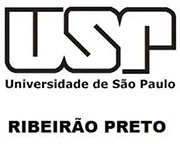|
The production of biofuels from plant biomass has attracted attention in recent years as an environmentally friendly alternative to petroleum-based energy sources. Filamentous fungi, which naturally grow well on decaying plant material, are of particular interest for this process because of their ability to secrete enzymes necessary for the degradation of lignocellulosic material. A major drawback in fungal hydrolytic enzyme production is the natural repression of the corresponding genes when easily metabolised carbon sources are present, such as glucose - a process called carbon catabolite repression (CCR), which is largely mediated by the transcriptional regulator protein CreA. This is a drawback for second generation (2G) fuel production, which aims to convert non-glucose saccharides from lignocellulosic plant biomass (e.g. xylose, arabinose and cello- and xylooligosaccharides) into biofuels. Within the scientific objectives of the project, this study will uncover new mechanistic details underlying CreA-mediated CCR and provide a solid basis to investigate further factors involved in the utilization of carbon sources that could prove useful for many biotechnological applications using fungi. |
|
| Duration | 2019-2022 |
| Editing | Lisa T. Kohler, (TUM-HFM); Maria Augusta Crivelente Horta (TUM-HFM); Prof. Dr. Gustavo Goldman (University of São Paulo, Riberão Preto and TUM-IAS Hans-Fischer Senior Fellow); Prof. Dr. J. Philipp Benz (TUM-HFM) |
| Funding |
TUM-IAS  , DAAD/BMBF , DAAD/BMBF 
|
| Partner |
USP 
|
Publications
- Gabriel R, Thieme N, Liu Q, Li F, Kohler LT, Harth S, Jecmenica M, Ramamurthy M, Gorman J, Simmons B, McCluskey K, Baker SE, Tian C, Schuerg T, Singer SW, Fleißner A and Benz JP, 2021. The F-box protein gene exo-1 is a new target for reverse-engineering enzyme hypersecretion in filamentous fungi. Proceedings of the National Academy of Sciences (accepted MS)
- Mattos EC, Silva LP, Valero C, de Castro PA, dos Reis TF, Ribeiro LFC, Marten MR, Silva-Rocha R, Westmann C, da Silva CHTDP, Taft CA, Al-Furaiji N, Bromley M, Mortensen UH, Benz JP, Brown NA, Goldman GH, 2020. The Aspergillus fumigatus phosphoproteome reveals roles of high-osmolarity glycerol mitogen-activated protein kinases in promoting cell wall damage and caspofungin tolerance. mBio 11:e02962-19, doi: 10.1128/mBio.02962-19
- Horta MAC, Thieme N, Gao Y, Burnum-Johnson KE, Nicora CD, Gritsenko MA, Lipton MS, Mohanraj K, José de Assis L, Lin L, Tian C, Braus GH, Borkovich KA, Schmoll M, Larrondo LF, Samal A, Goldman GH, Benz JP, 2019. Broad substrate-specific phosphorylation events are associated with the initial stage of plant cell wall recognition in Neurospora crassa. Frontiers in Microbiology, 10:2317. doi: 10.3389/fmicb.2019.02317